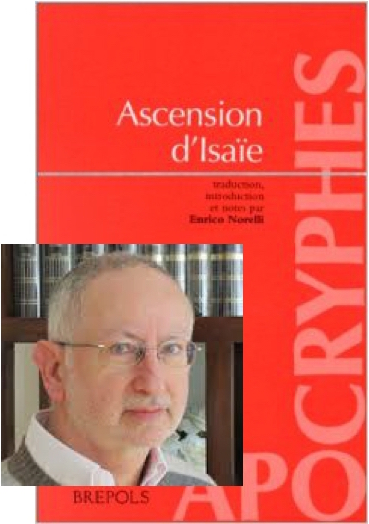Hi Neil,
I have a copy of Norelli’s Ascension d’Isaïe and I consulted it when I wrote parts 7 through 9 of my blog series on a Simonian origin for Christianity. In part 7 of the series I noted in passing that Norelli put the date of composition for the Vision of Isaiah at the end of the first century. And in post 8, as part of my Jan. 30, 2014 response to George Hall, I quoted from page 52-53 of Norelli’s book.
However, just judging from this one book of Norelli’s, I’m skeptical that his work will prove to be, as Bauckham says, “definitive.” And I don’t see that Bauckham himself really considers it all that definitive either for, as I recall, Bauckham argues that Norelli is wrong about assigning a different author to each of the two parts of the Asc. Isa. and about Norelli’s dating of the second part (theVision of Isaiah) earlier than the first (chapters 1-5).
In regard to the Asc. Isa.’s chapter 11 “pocket gospel:” I explain in post 8 my reasons for questioning whether it was part of the original Vision. As you know, I share Carrier’s and Doherty’s suspicions that it was not, but we have different guesses about what was originally there. I proposed that some kind of early passion narrative like the one now found in gMark would fit in better with the rest of the Vision.
Roger Parvus
Continuing from A New (Completely Revised) Look at the Ascension of Isaiah . . .
Roger Parvus has thankfully reminded me that he addressed aspects of Enrico Norelli’s book on the Ascension of Isaiah in his earlier posts. See his comment on my previous post (in side-box) for links to these and for his more general response to Norelli’s work.
This post overviews the contents of the Asc. Isa., a little of how we came to possess it, and what I understand to be Norelli’s argument for a fresh approach to the study of the text.
Ascension of Isaiah: Contents
The Asc. Isa. was most likely originally composed as a Greek text but its most complete version today is in the Ge’ez or classical Ethiopic script. This has come down to us as part of the Ethiopian Old Testament that has preserved a number of books rejected from the canons of Jews and Christians (such as Enoch and Jubilees).
In its present form the Asc. Isa. consists of two parts.
The first part (chapters 1-5) borrowed the Jewish tradition of the death of Isaiah who was sawn in two by King Manasseh.
King Hezekiah, the father of Manasseh, summoned his son to hear Isaiah recount his vision — the one that we will read about in part 2. But Isaiah informed Hezekiah privately that Manasseh would lead Israel astray from the true faith and that he would kill the prophet.
After Manasseh became king he was influenced by the false Samaritan prophet Belchira to capture Isaiah and saw him in half. We also learn that the real power behind these two men inspiring them to murder Isaiah was the devil, named Beliar.
Beliar was incensed against Isaiah because the prophet had exposed the his scheme to deceive and be worshiped by humanity.
Isaiah’s vision that had so enraged the devil is summed up in between the arrest of Isaiah and his martyrdom. In this section we read additional material that is not found in the later account of the vision (3:13-4:18):
-
after the resurrection and ascension of Christ the church will flourish uncorrupted for a time
-
a time will come when sinful pastors and elders who reject the Holy Spirit and the prophecies (including Isaiah’s prophecy) will lead the church astray
-
the future coming of the Beliar, the devil, in the form of the Antichrist who will persecute the true believers
-
the second coming of the Christ who puts an end to the work of the Antichrist.
The second part (chapters 6 to 11, except for 11:41-43) brings us to the vision so often referred to in the first half. This vision, therefore, is a flashback to the twentieth year of Hezekiah’s reign and the vision of Isaiah that angered the devil.
Chapter 6 begins with Isaiah leading the prophets in worship in the king’s house in Jerusalem. Isaiah falls into a trance and is transported in vision through the seven heavens up to the presence of God (7:2-9:26). There he witnesses heavenly worship in progress, this one led by Christ (who had not yet visited earth) and the Holy Spirit (9:27-10:6).
Isaiah is then shown God’s plan of salvation:
Like this:
Like Loading...







